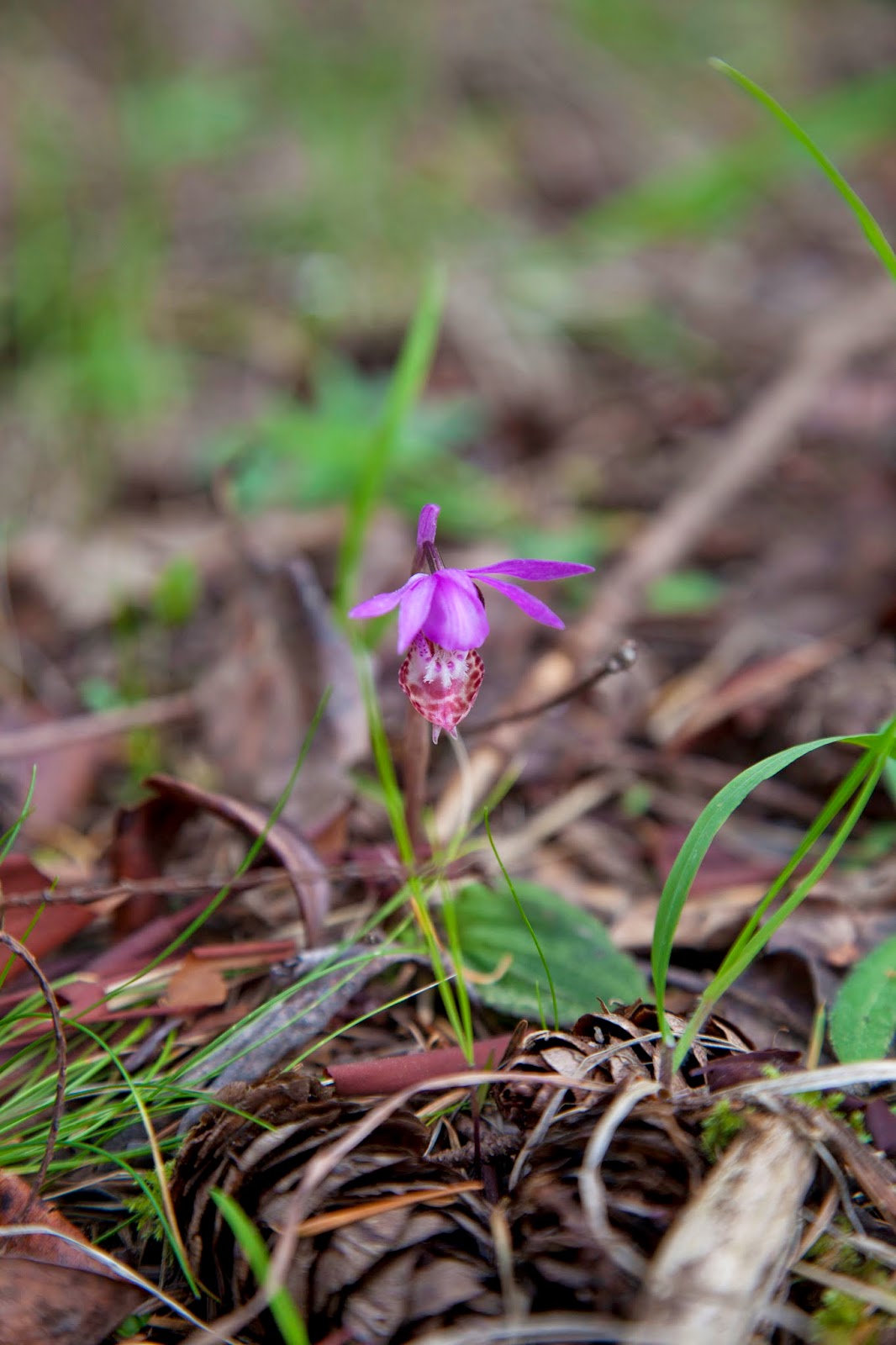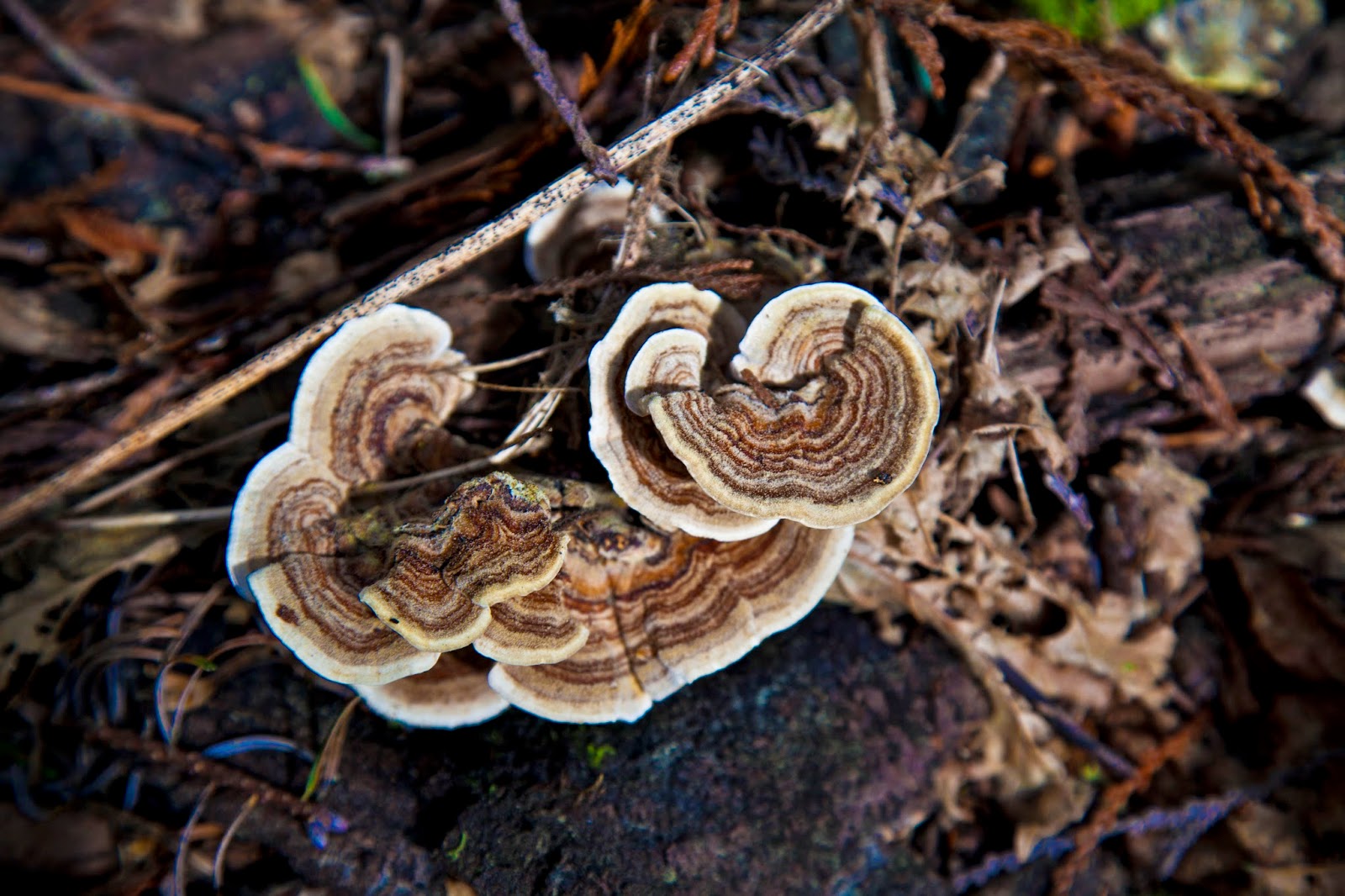facing saanich
the Tsawout elders teach us
through sencoten eyes
On our second day on Salt Spring Island, Teresa takes us on a special hike through a wilderness area under the stewardship of the Tsawout First Nation. The sign at the trail head shows their beautiful thirteen month calendar depicting the local flora and fauna, especially the fish and shellfish native to the waters and beaches of the island.
The forest is filled with silence, soaring trees and light penetrating the dark, moist floor.
Wild orchids provide tiny spots of violet and red in a realm of green and gray and brown.
One of the girls at the head of the group points down and calls back, "Watch where you step." It's a striped and spotted slug, about the size of the small pine cone it's slowly ambling over.
A delicately striated and layered shelf mushroom lives on a fallen log, transmuting dead cells into new life.
A burl on a cedar tree creates a convoluted mask to cover a wound, while spider webs form miniature staircases up the crevices of the bark.
So little space, so much life -- the limbs of a tree wrap around each other and continue growing in different directions.
Near the water, Teresa points out the foundation of a Tsawout lodge. How long since it stood on this serene shore?
In a clearing nearby, we come across a circle of pine branches surrounding a stump surmounted with a column of rocks. Here the hands of humans have used nature's gifts to create a sacred space for their spirits.
By the shore, massive madrone trees stretch their coppery branches out over the salt water.
A heart shaped scar encloses the place where a limb broke off of a young madrone.
Where the madrone's flaky bark has peeled away, the underlying bumps look like little polar bears.
We leave the forest and climb down to the shore, where I find a moss-covered piece of driftwood that looks like a deer skull.
On another piece of driftwood, an oyster shell, the fabulously crenelated shield for the soft sea creature that the Tsawout frequently feasted on.
The white sand of the beach is made from bits of oyster shells.
Tiny islets in the bay harbor seabirds and one lone Canada goose.
From a rocky point we have a view of a distant peak.
Where water washes the rocks, tiny white turban shells cling to the leathery kelp.
Nearly hidden under the kelp, a purple starfish gleams.
At the end of the trail, the first signs of civilization, an anchored sailboat, fortunately with its motor raised out of the quiet water.

















































